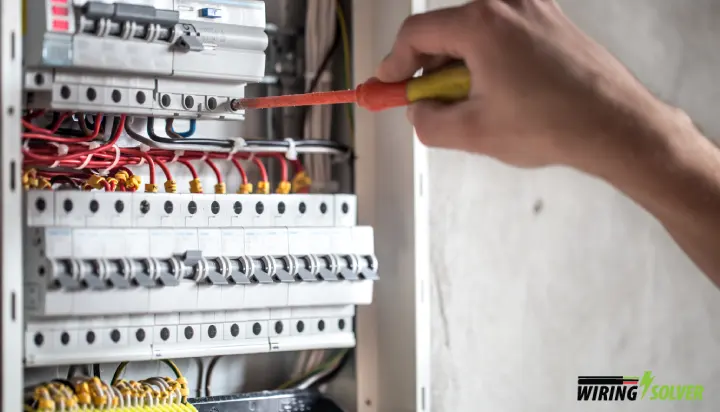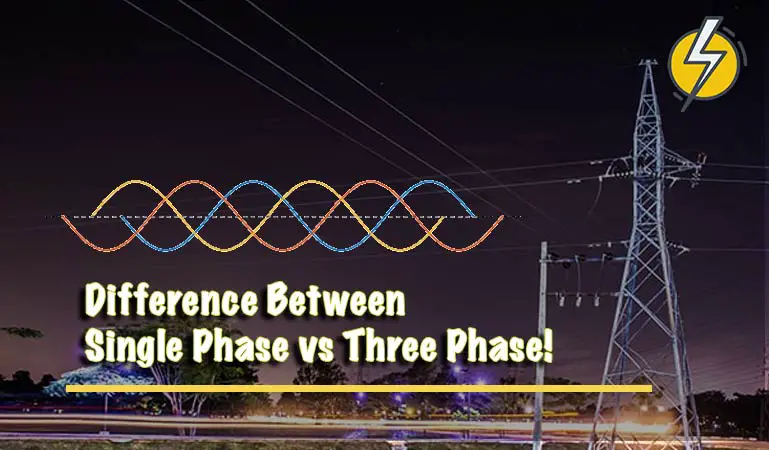Track lighting can be used to highlight artwork, provide task lighting, or add a stylish ambiance to a room. But how is track lighting load in residences calculated?
There are several ways to calculate track lighting load. The area method and the lumen method are the two most commonly used methods. The area method yields an approximation of the load, whereas the lumen method yields a much more accurate result.
This article will discuss the process of calculating track lighting load in residences. It will cover the different factors that are considered when making this calculation and how to use the information to create a safe and efficient lighting load.

Area Method for Calculating Track Light Load
Using this method an approximate calculation is done using the allowed lighting power density. If you’re wondering, how is track lighting load in residences calculated, this is one of the methods used.
In this method, we will need certain variables to calculate the lighting track load. The necessary variables include,
A = Given Floor Area (Square – Meter)
LD = Lighting Load Density (Volt – Amperes per Square – Meter)
To calculate the lighting load, assume L, the number of branch circuits has to be calculated as well. The NEC (National Electrical Code) code provides “Demand Factors” for calculating lighting loads.
The table provided by the NEC for lighting load is as below:
Lighting Load Demand Factors
| Type of Occupancy | Applied Demand Factor per Voltage(Volt – Amperes) | Demand Factor(%) |
| Dwelling Units | First 3000 or less atFrom 3001 to 120,000 atRemainder over 120,000 at | 1003525 |
| Hospitals | First 50,000 or less atRemainder over 50,000 at | 4020 |
| Hotels and Motels(Including apartment houses without provision for cooking by tenants) | First 20,000 or less atFrom 20,001 to 100,000 atRemainder over 100,000 at | 504030 |
| Warehouses(Storage) | First 12,500 or less atRemainder over 12,500 at | 10050 |
| All Others | Total Volt – Amperes | 100 |
To calculate the lighting load with the area method, we will use this formula:
L = (A * LD) * Demand Factor
For example:
If your household has an area of 200 Square Meters and your required lighting density at any given time is 40 Volt – Amperes per Square – Meter at any given time, then your wattage capacity becomes:
(200 * 40) Volt – Amperes
Or, 8000 Volt – Amperes
Or, 8000 Watts.
As can be seen from the above table, we have to apply a demand factor of 100% and 35% respectively.
So, the approximate track load will be,
(3000 x 100%) Watts + (4000 x 35%) Watts
Or, 3000 Watts + 1400 Watts
Or, 4400 Watts
This is how track lighting load is calculated using the area method. Electricians will often use this method to troubleshoot your system.
If you’re wondering how much electricians charge to troubleshoot, that’ll depend on the type of service you require them to perform, ranging from $50 all the way up to $2000+.
Lumen Method for Calculating Track Light Load
Using this method an accurate calculation can be done using engineering formulas and standard lighting table values. In this method, we have to check the illumination level, which is calculated in Lux.
Illumination level is the amount of light, in Lux, falling on a surface. It is the luminous flux Lumens spread within the area (in square meters) of a designated space in the building.
1 Lux = 1 Lumen per Square – Meter.
The variables or factors needed to calculate lighting load using the Lumen method are as below:
- Area (A)
- Maintaining Illumination (MI)
- Number of Lights (NK)
- Coefficient of Utilization (CU)
- Total Lamp Lumens (LL)
- Light Loss Factor (MF)
The formula for the number of fixtures needed,
NF = (MI x A) / (NL x LL x CU x MF)
And if you use W Watts per fixture
Lighting Load, L = NF x W Watts
The maintaining illumination is fixed by the NEC, and you can find the coefficient of utilization on the product packaging or printed on the side of its body.
For example:
Let’s say, your household has an area of 200 Square Meters and you require 20 lights. The coefficient of utilization is 0.5 and the maintaining illumination is around 1000 lumens. Total lamp lumens are 2000, light loss factor is 30%.
Therefore, the number of fixtures,
N = (1000 x 200) / (20 x 2000 x 0.5 x 30%)
Or, 33.333 Fixtures,
Let’s round it up to 34 fixtures.
So, for 100 watts per fixture, the lighting load will be,
LD = 34 x 100 Watts
Or, 3400 Watts
As you can see, the required track lighting load for the same amount of area is significantly less in the lumen method compared to the area method.
Therefore, it is an excellent method to reduce excessive wattage usage as well as to reduce the voltage between neutral and earth.
How Can I Keep Track Lighting Load Within the Recommended Limits?
It’s important to make sure that the load of the track lighting system is within the recommended limits to ensure safety and proper function.
Here are some tips for keeping track of lighting load within the recommended limits:
- Different track lighting systems have different load limits, so it’s important to know the specifications of your specific system. The load limit is usually listed in the installation instructions or on the product packaging.
- It’s important to use bulbs that are compatible with your track lighting system. Using bulbs with a higher wattage than what the system is designed for can increase the load and potentially cause problems.
- If you need more light than what your track lighting system can provide, consider adding additional track lighting systems rather than trying to fit more bulbs onto a single track.
- Energy-efficient bulbs, such as LED bulbs, use less wattage and can help reduce the load on your track lighting system.
- Make sure the wiring of your track lighting system is in good condition and properly installed. Faulty wiring can increase the load on the system and potentially cause problems.
By following these tips, you can help ensure that your track lighting load stays within the recommended limits, which can help prevent problems and keep your lighting system functioning properly.
Summary
Track lighting load in residences needs to be calculated carefully to ensure a safe and efficient lighting system. It is important to consider all the factors that can affect the total load and to use the recommended limits as a guide.
Taking the time to properly calculate track lighting load can help to ensure that your home has a stylish and functional lighting system that will last for years to come.



![Why Does My Neutral Wire Have Voltage? [Answered]](https://wiringsolver.com/wp-content/uploads/2022/04/Why-Does-My-Neutral-Wire-Have-Voltage.jpeg)


